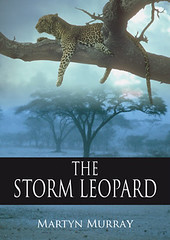On reading The Storm Leopard, a friend asked me: “So what do you think about the old timer’s prediction and do you think that you can make a more optimistic prediction for the next 30 years?” After thinking about this for a day or two, I gave him an answer. In essence, I think things are going to get worse but that there is a chance we can throw off the albatross around our necks and work out something better.
Well the old timer has proved right up to now in that more and more wild places are lost each year and I reckon the pace is quickening. But against that, the conservation movement has responded with an amazing network of protected areas. So the $64,000 question ($64 million with inflation?) is whether the network will hold up against real pressure. There are plenty of signs of slippage in Africa – loss of territory in Akagera NP (Rwanda), loss of large mammals in Mago NP (Ethiopia), loss of Addax from Aïr and Ténéré National Nature Reserve (Niger), loss of northern white rhino from Garamba NP (DR Congo) and even the Serengeti lost its black rhino and is now threatened by a new road. The problem with the parks is that they create an ‘us or them’ divide between people and nature. And it is that divide which is at the heart of The Storm Leopard. On the bright side, we have really good knowledge today about how to conduct community conservation and much more active support groups and networks. And there are black rhino back in Serengeti. So how does it all stack up?
I think the future of wilderness and wildlife is tied up with the bigger issue of sustainable living. According to recent measures of sustainability, human demands on the environment overshot the global carrying capacity sometime in the 1980s and is now at least 1.3 times above. It is partly a problem of human population growth, but even more alarming to me is the relentless rise in per capita use of resources in wealthy nations, and the continuing deep disparity between rich and poor. The future of the wild is tied up with our ability to confront the underlying drivers in society causing unsustainable use of the Earth’s natural resources (forests, pastures, soil, seas, fresh water, plant and animal products, fossil fuels and the sinks which absorb CO2 and other pollutants.) There has been progress, for example UK has made a nod towards renewable energy and Europe has made a feeble effort to do something about overfishing, but when recession hits and jobs are threatened that kind of thinking is conveniently sidelined. Business and politics demand growth in the economy as the way out of the crisis. It is the same in every western Nation. Growth is so deeply rooted in western society that we all expect to increase our income level as we grow older, and we all expect society to get richer every generation. What is needed and what we aren’t getting is balance.
So the future of the wild depends, I think, on whether we can convert our ‘global growth economy’ into a ‘global balanced economy’ – one which supports sustainable use of the Earth’s resources. In actual fact, we are going to get a sustainable economy whether we like it or not. The real issues are whether it will be forced on us by the Earth or whether we will get there by our own restraint, and how much permanent damage we will inflict on the Earth’s natural resource base and ourselves before we get there.
If I try to answer my friend’s question again, one of the main differences between 1970 (when I met the old timer) and today is that sustainability was a problem for the future back then but it is a problem that we are fully engaged with today. What I think will happen is that the global economic expansion will keep going until we hit the buffers hard. Finally at that point, people will throw it out – I mean they will reject the rationale of growth because they will see how much damage and suffering it has caused. The future of the wild depends on what happens at that point in time. The best hope is that we change our relationship with nature. We understand that we are unavoidably part of nature, that we are unavoidably all linked together through nature, and that our future can only be secure when we live harmoniously in nature and within her limits. It would be an awakening of environmental consciousness. I hope it will be an even more profound awakening than that which generated the social consciousness of modern western society. As we know, the past 150 years has seen the abolition of slavery and child labour and moves to address unequal treatment of women in law and in the workplace. If this awakening of an environmental consciousness happens, then the new ‘globally balanced economy’ could be linked to a nature-friendly society, one which respects and cares about the wild. This of course is far from guaranteed but it is I think possible, perhaps more than possible given our natural underlying instincts, and surely it is something that is worth working for. That is what The Storm Leopard is really all about.




